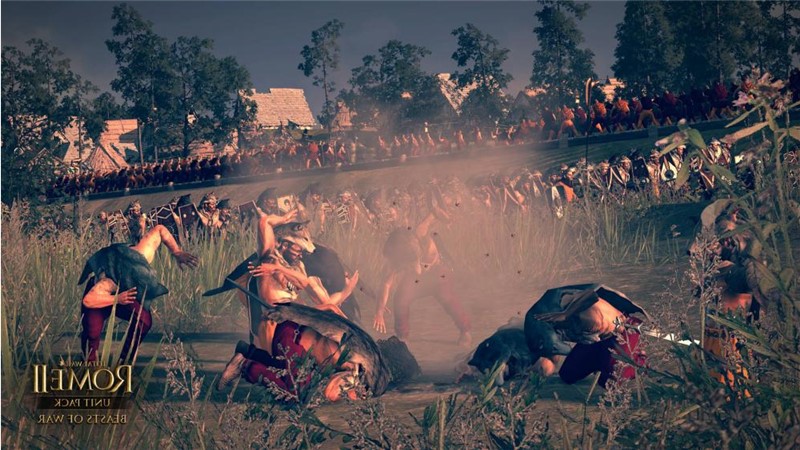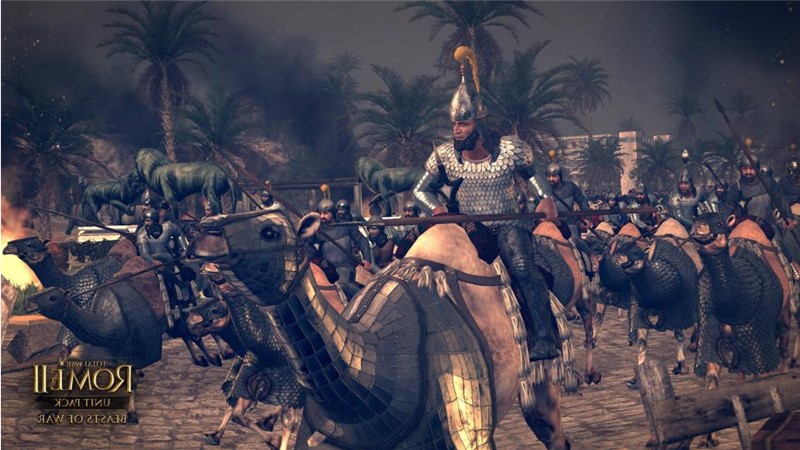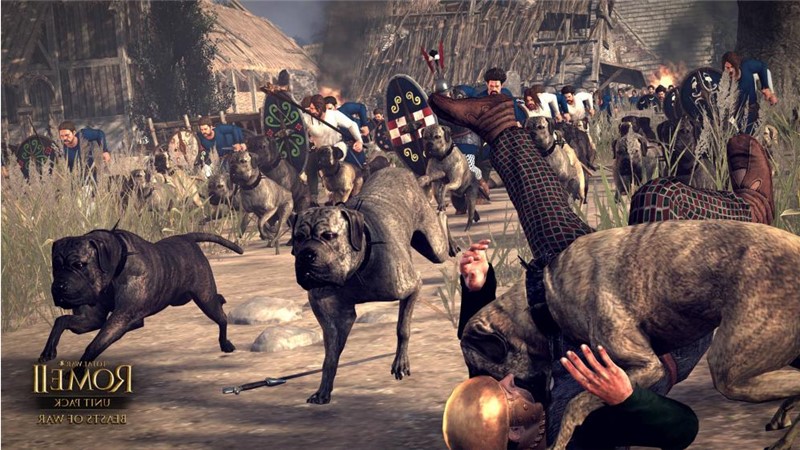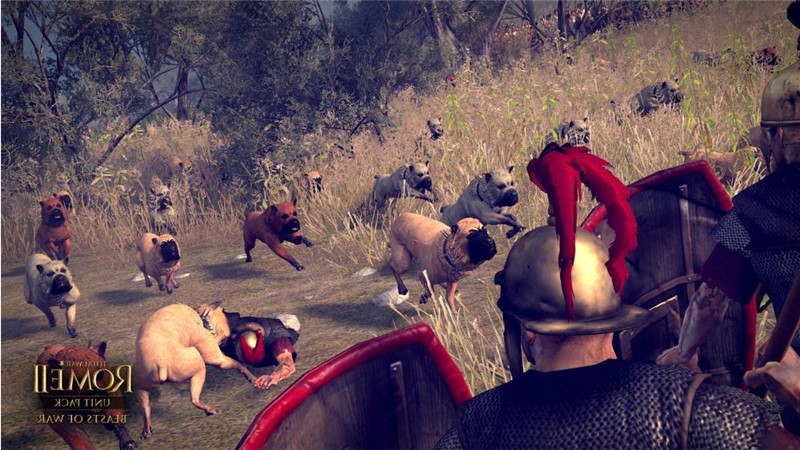ViciGame
Unlock Your Gaming World |
Discover a Vast Collection of Games and Dive into Thrilling Virtual Realms. Your Ultimate Gaming Destination Awaits!
Description
Marshall your savagery, and strike primal fear into the hearts of
your enemies with the Beasts of War unit pack for ROME II.
Comprising seven new battlefield units, Beasts of War brings
further variety to ROME II’s already diverse unit roster. Terrorise
your enemies and slow their progress with beehive, scorpion and
snake-pot ballistas, or crush them under the weight of
heavily-armoured Cataphract Camels and Mercenary Syrian Armoured
Elephants. And when their will is broken and they flee the field,
run them down with two new breeds of ferocious war-dogs. Beasts of
War brings introduces the following recruitable units to ROME II:
- Molossian Dogs Can be recruited by: Epirus A
heavily muscled beast from western Greece, the now-extinct
Molossian is considered to be the predecessor of many of today’s
larger breeds, such as the Rottweiler and Great Dane. Used as both
a guard dog and in battle, Virgil remarked “never, with them on
guard, need you fear for your stalls a midnight thief, or onslaught
of wolves, or Iberian brigands at your back.” These vicious dogs do
not tire easily, and never lose the scent of an enemy. - Beehive Onager Can be recruited by: Athens,
Epirus, Macedon, Sparta, and Syracuse Whilst large-scale beekeeping
for agricultural purposes was a later innovation, the humble
honeybee nevertheless held an important place in ancient Greek
culture. A trio of mythical nymphs, the Thriae or ‘bee maidens’,
were loved by Apollo and Poseidon, bearing their children. Bees
also have a practical application in battle, as a swarm of angry
bees will always cause troops to stall and panic. - Scorpion Pot Ballista Can be recruited by:
Pontus, Parthia Home to the most lethal scorpions in the known
world, whose sting can paralyse and kill a man within an hour, it
was only a matter of time before a wily Middle Eastern general used
them against his enemies. Spare a thought, then, for the Roman
emperor Severus; whilst besieging the Parthian city of Hatra, his
army was showered with pots of scorpions from atop the city walls.
Like Trajan before him, Severus failed to breach the defences, even
after two attempts. - Snake Pot Ballista Can be recruited by:
Carthage Perhaps the most famous use of potted animals was Hannibal
Barca’s tactic against the fleets of Eumenes II of Pergamon.
Hurling large clay pots full of venomous snakes onto the decks of
Eumenes’ ships; he panicked the enemy fleet and won the day. Any
unit struck by writhing, venomous snakes will pause to consider the
wisdom of marching onwards! - Camel Cataphracts Can be recruited by: Parthia
The Roman general Macrinus was not noted for his experience,
although had another fought the Battle of Nisbis in 217 AD, it’s
hard to imagine he’d be any less stunned by the Parthian cataphract
camels fielded that day. Wearing coats of tough, yet flexible,
scale-mail, they made an awesome and terrifying sight as they
punched through the frontlines and spooked the Roman horses with
their camels’ earthy stench. - Celtic Warhounds Can be recruited by: Iceni,
Cantiaci, Caledones, Demetae, Dunmonii, Brigantes, and Ebdani Dogs
have always been useful for guard, patrol and scout work. With
skilled handlers they can also be used effectively on the
battlefield. Attack dogs were specifically bred and trained to
ignore the noise and chaos of combat. The Celtic tribes of the late
Iron Age put them to great use. Their speed and ferocity made them
ideal shock-troops, and perfect for running down fleeing
stragglers. - Mercenary Syrian Armoured Elephants Can be
hired as mercenaries in: Dura, Antioch, Tyros, and Palmeira Indian
elephants first came to the Middle East when Seleucus, one of
Alexander the Great’s Successors, invaded India in 305 BC. 500 war
elephants were handed over as part of the peace treaty between the
Seleucid dynasty and the Mauryans of India, and the Seleucids went
on to breed many more from this initial stock. War elephants
remained an important part of the Seleucid army until their defeat
by the Romans at Magnesia in 190 BC, following which they were
forbidden from breeding more.
System requirements
Minimum:
- OS: XP/ Vista / Windows 7 / Windows 8
- Processor: 2 GHz Intel Dual Core processor / 2.6 GHz Intel Single Core processor
- Memory: 2 GB RAM
- Graphics: 512 MB DirectX 9.0c compatible card (shader model 3, vertex texture fetch support).
- DirectX: Version 9.0c
- Storage: 35 GB available space
- Additional Notes: Screen Resolution – 1024×768
Recommended:
- OS: Windows 7 / Windows 8
- Processor: 2nd Generation Intel Core i5 processor (or greater)
- Memory: 4 GB RAM
- Graphics: 1024 MB DirectX 11 compatible graphics card.
- DirectX: Version 11
- Storage: 35 GB available space
- Additional Notes: Screen Resolution – 1920×1080





